Heritage
The Tragic Story Of A Chola Era Bronze Icon, And The Lucky Smuggler Who Is Getting Away With Heritage Theft
S Vijay Kumar
Sep 20, 2019, 06:00 PM | Updated 06:00 PM IST
Save & read from anywhere!
Bookmark stories for easy access on any device or the Swarajya app.
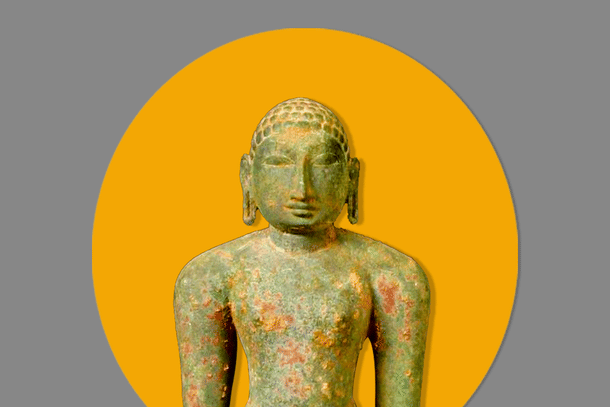
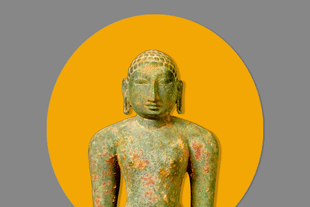
You’ve never heard of Sanjivi Asokan. Not a single photograph of this individual is available on the Internet but authorities and those chasing heritage theft cases in India say that Asokan was the key supplier to Subhash Kapoor, a major heritage smuggler residing outside India.
Asokan was arrested in March 2009 and one would think that given the lapse of nearly ten years since his arrest the authorities would have made tremendous progress on investigations on heritage theft.
Alas, nothing has come of his arrest. Sources say that this individual is already out on bail despite the rich amount of evidence available for investigators to pursue.
The tragic story of a Chola-era Jain bronze icon smuggled out of this country by this duo is one such case. The bronze that is nearly a thousand years old was unearthed during a routine farming activity in rural Tamil Nadu and eventually found its way to the international art market.
Let’s now look at the sort of evidence the authorities already have access to.
There exists, in legal records somewhere within the US courts system, a copy of the email that Sanjivi Asokan sent to Subhash Kapoor about the bronze Jain icon. In the email, Asokan explains in great detail about how the icon was found:
“In Nagaptnam belt near Mannarkudy there is a place called Deepamkudy. It is famous for Jain temples. Now also there are the symbols of ruined 11th C Jain temples…
“...While digging he got some vessels and this piece. He sold all these to a hawker. The hawker sold the vessels to an iron merchant and asked him to consider the piece as an art object…
“….One of his broker knew about this and he gone to see the piece and very much satisfied and made his broker to buy the piece. Thus through four or five hands it reached me..”
The above email, when read in full, shows that a wide network of smugglers is engaged in sourcing antiques from Tamil Nadu.
Now, we know that Asokan was arrested nearly ten years ago. Do we know if any of these other operators were picked up, prosecuted or punished? No.
The email records between Asokan and Kapoor also show Asokan being in touch with Wierner Galleries, an entity previously exposed as being involved in heritage smuggling:
“The images of the piece were send to Mme. Nancy Weiner. She was very satisfied with the piece. I asked her fifty thousand dollars and she agreed for forty-five thousand dollars.
“....The day before her expected arrival she informed me that she could not come, as a lot of problems had arisen there…”
Should investigations have proceeded against Weirner Galleries? Yes. But did it actually happen? We have no evidence of the same.
There are more entities being named in the emails but we have no indication of whether investigation and prosecution against them are proceeding efficiently. More from Asokan’s email:
“Then I send the images to Dr Ramachandran and he asked Mr. Deen Dayal about the piece and Mr Deen visited me and inspected the piece personally and told me that he could not buy it as it is a huge money, but he told me that it is a very genuine 11th C piece”
The entire email is a startling blow-by-blow record of how smuggling works in the antique/heritage market in the country. Deendayal, referred to as Mr Deen Dayal in the email, has been arrested albeit after a lot of delays.
India Pride Project was able to trace this bronze Jain icon through a series of lucky encounters and videos.
In the archives of Subhash Kapoor there exist many photographs of this bronze Jain icon.
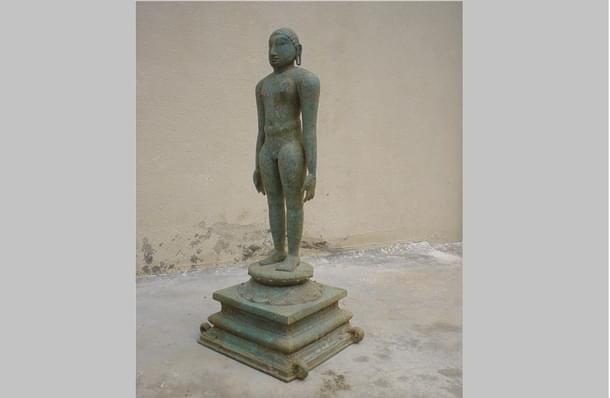
But had Subhash Kapoor actually bought this bronze statue? The answer to this question came in the form of a clue --- from a photograph of another artifact that we are chasing (the dancing child saint Sambandar --- now sold to the National Gallery of Australia). This photograph from the Kapoor display showed a part of the Jina bronze on the side.
However, as luck would have it, we were not able to find the bronze in Kapoor’s storage facilities that were raided by US authorities in 2012.
So we renewed our search and found this interesting video of a show called “Chola Sacred Bronzes of Southern India” from an exhibition held in London at the Royal Academy of Arts, 2006-2007. The Jain icon is clearly there!
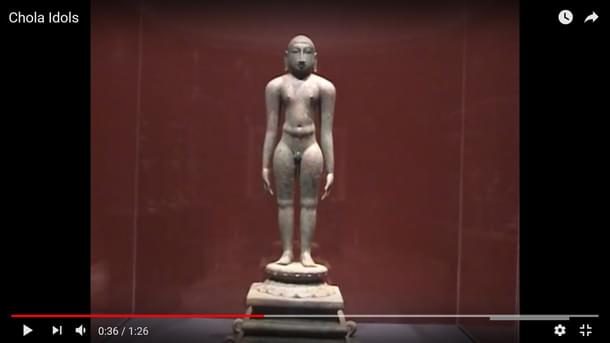
The bronze was also featured under the “Chola Sacred Bronzes of Southern India” at the Royal Academy of Arts, London’s exhibition catalogue. A short walk to the National Library of Singapore got us the relevant pages.
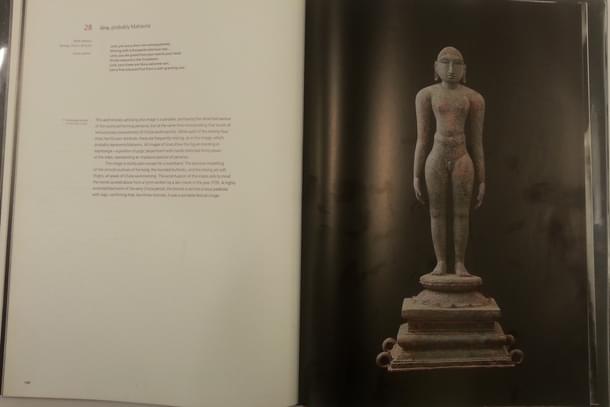
We are able to match the image of the original icon with the image of the bronze icon at the exhibition, as shown below.
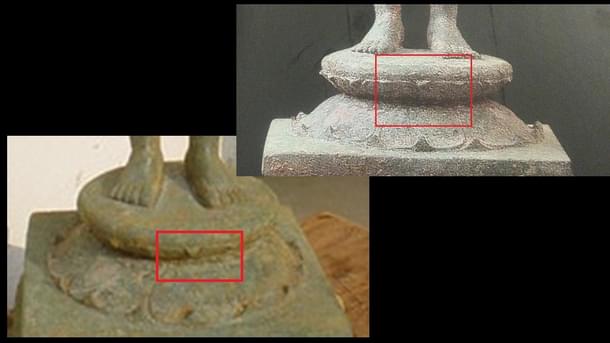
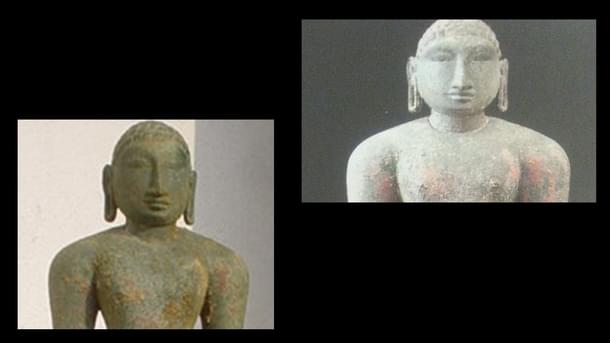
We are now trying to get the exhibition organisers to reveal where they got the bronze icon from but we’ve not met with any success in finding out about the private collector who now owns this thousand-year piece of Indian heritage.
But what we do know is that the kingpin, Subhash Kapoor, got professional chemical and metallurgical analysis of the bronze done to establish its age and preserve it.
We also know, from US court records, that Kapoor sold off the bronze for US $70,000 in March 2005.
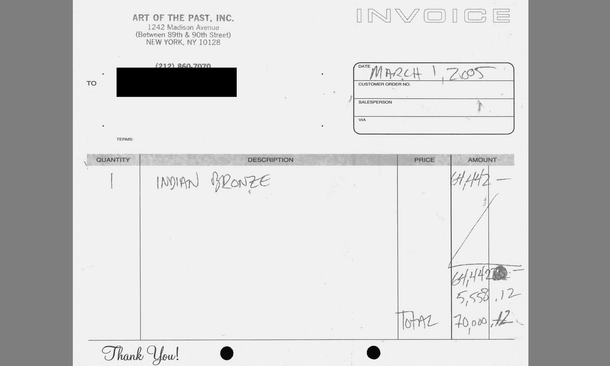
We know that he made a fake ‘provenance certificate’ using his girlfriend as a cover. He used old stationery and an old typewriter to generate a pre-1970 certificate so that if the bronze turned out to be genuine, the certificate would allow him to legally sell the piece.
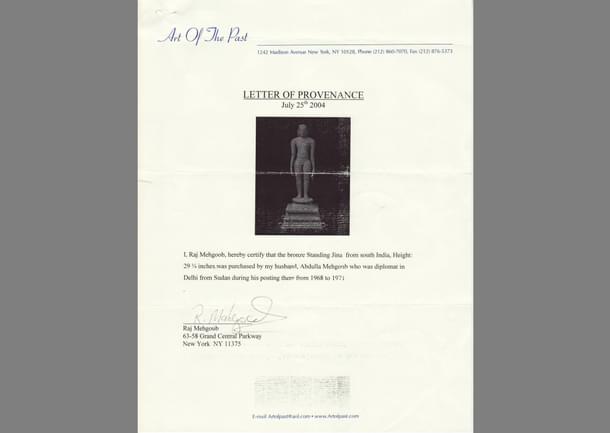
If we, at India Pride Project, know so much, shouldn’t investigators in India know more? How is it that associates of Subhash Kapoor such as Asokan are today allegedly out on bail and not punished yet?
Vijay is a shipping professional working in Singapore. He is an avid heritage enthusiast and runs poetryinstone, a blog aimed at promoting awareness of Indian art.





